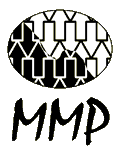Sample Design
A variety of communities have been sampled in order to provide a basis for comparative study and generalization. These communities have been chosen to provide a range of different sizes, regions, ethnic compositions, and economic bases. The sample thus includes isolated rural towns, large farming communities, small cities, and very large metropolitan areas; it covers communities in the states of Aguascalientes, Baja California Norte, Chihuahua, Colima, Durango, Guanajuato, Guerrero, Hidalgo, Jalisco, México, Michoacán, Morelos, Nayarit, Nuevo León, Oaxaca, Puebla, San Luis Potosí, Sinaloa, Tlaxcala, Veracruz, Yucatán, and Zacatecas (see map); it contains both indigenous and mestizo towns; and it embraces communities that specialize in mining, fishing, farming, and manufacturing, as well as those that feature very diversified economies.
Three to five Mexican communities are surveyed each year during the months of December and January of successive years. The sample size is generally 200 households unless the community is under 500 residents, in which case a smaller number of households are interviewed. If initial fieldwork indicates that U.S. migrants return home in large numbers during months other than December or January, interviewers return to the community during those months to gather a portion of the 200 interviews.
These representative community surveys yield information on where migrants go in the United States, and during the months of July and August interviewers travel to those U.S. destinations to gather non-random samples of 10 to 20 out-migrant households from each community. The U.S.-based samples thus contain migrants who have established their households in the United States.
|



